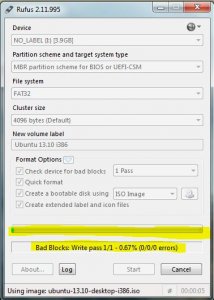

Upon automatically returning to the Image Burning Setup window, note that the ISO file is now listed as the disc image to write.ĥ. Locate and double-click the downloaded ISO file to load it. Click the button beneath the title Select a disc image to write to open up your file manager. Click the Burn Image - Burn an existing CD/DVD image to disc button to open the Image Burning Setup window.Ĥ. Insert a Blank CD/DVD (use a DVD if burning an ISO for anything other than the NET Edition)ģ. The main disadvantage, in this case, is that there is no double-check option for dd. GUI tools help you to identify and select the target drive, and provide a final checkpoint, where you can double-check, that you will be writing to the correct drive.1. Also, it is very useful to know how to do it in a terminal, because there isn't always a GUI available. Using the terminal to create a bootable USB drive is much easier and way faster than with GUI tools. If it is not installed on your system, you can usually install it using your distribution package manager.Īfter the process is finished you can use USB as a bootable drive for Ubuntu installation or repair. Not all Linux distributions may have pv installed by default. Note: From the 8.24 version of GNU Coreutils, dd command has the option to show the progress (status=progress). The conv=fdatasync bit is important as dd can return before the write operation finishes.īy default the progress of the command will not be displayed, to view the progress you can use pv command: $ dd if=/tmp/ | pv | sudo dd of=/dev/sdc bs=4M conv=fdatasync Where bs is read and write BYTES bytes at a time, if is the input file, of is the output file. Sets the block size to 4 megabytes, which can improve the speed of the data transfer.įor example: $ dd bs=4M if=/tmp/ubuntu-20.04.1-desktop-amd64.iso of=/dev/sdc conv=fdatasync The point here is to write the disk name itself (e.g.

Make sure to change with your USB disk letter accordingly. Where /path/to/input.iso is the path where. Syntax: $ dd bs=4M if=/path/to/input.iso of=/dev/sd conv=fdatasync

Be cautious using the dd command of overwriting or deleting your data. We are going to use dd command to create a bootable USB flash drive. Or $ curl -O Step 3: Create Bootable Drive from Terminal This will download iso file to the current directory. Or you can download iso file from the command line using wget or curl command. Here we will create a Ubuntu bootable flash drive, first go to ubuntu website and download the iso file to your Linux computer. └─sda1 8:1 0 9G 0 part / Step 2: Download Linux ISO File


 0 kommentar(er)
0 kommentar(er)
